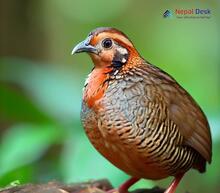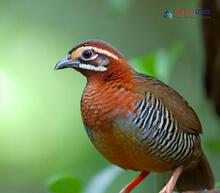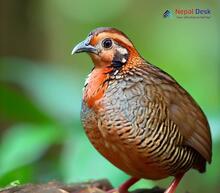The Perdicula genus belongs to the Phasianidae family of birds – a diverse group that includes pheasants, partridges, and quails. Known for their small stature and distinctive calls, the Perdicula species have evolved fascinating characteristics that set them apart from their relatives. In this article, we will delve into the origin, evolution, taxonomy, morphology, and ecology of this intriguing genus. We will also shed light on its presence in Nepal – the perfect habitat for these unique birds.
Origin and Evolution
The origin of the Perdicula genus can be traced back to southern Asia, where they are primarily found in countries like India, Pakistan, and Nepal. From a genetic perspective, these birds have evolved over millions of years to adapt to the environment they inhabit. Through natural selection and isolation, several distinct species have emerged with defining features that aid in their survival.
Taxonomy
Currently classified under the Perdicula genus are four recognized species: Jungle Bush Quail (Perdicula asiatica), Rock Bush Quail (Perdicula argoondah), Manipur Bush Quail (Perdicula manipurensis), and Painted Bush Quail (Perdicula erythrorhyncha). Each species has specific characteristics that differentiate them from one another while maintaining their similar morphology as members of the Phasianidae family.
Morphology
Perdicula species are small terrestrial birds with distinctive markings on their plumage. They usually exhibit a combination of brownish-grey feathers that provide excellent camouflage in their respective habitats. The colorful facial markings on certain species play a vital role in attracting mates during mating seasons. Additionally, these birds possess strong legs and powerful wings granting them fast running and flying capabilities when faced with potential predators.
Ecology
The ecology of Perdicula species diverges depending on their geographical location. Generally, they inhabit grasslands, scrublands, and open forests where they can find cover from predators and ample food sources. Their diet mainly consists of insects, seeds, and small plants, making them vital for maintaining a balanced ecosystem by controlling insect populations and aiding in seed dispersal.
Presence in Nepal
Nepal's diverse geography and varied habitats make it an ideal home for the Perdicula genus. The Jungle Bush Quail and Rock Bush Quail are the two species predominantly found in the country. Their habitat ranges from Tarai's grasslands to the slopes of the mid-hills, showcasing their remarkable adaptability to diverse environmental conditions.
In conclusion, the Perdicula genus offers a fascinating insight into the world of avian biodiversity. Its origin, evolution, taxonomy, morphology, and ecology emphasize the importance of understanding these unique birds as part of our natural world. Nepal's rich birdlife serves as an essential reminder that preserving these habitats is paramount for both protecting these species and maintaining ecological balance for generations to come.




